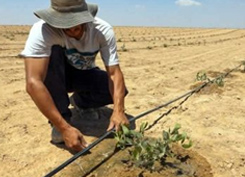Dec . 11, 2024 01:53 Back to list
High-Quality PPR Tube Solutions for Reliable Plumbing Applications and Efficient Installations
Understanding PPR Tube Products A Comprehensive Guide
PPR tubes, or Polypropylene Random Copolymer pipes, have gained significant popularity in plumbing and piping applications due to their numerous advantages. These tubes are extensively used in various industries, including construction, agriculture, and manufacturing, thanks to their versatility, durability, and resistance to corrosion. In this article, we will delve into the characteristics of PPR tubes, their applications, benefits, and key considerations when choosing the right PPR tube product for your needs.
What is PPR?
Polypropylene is a thermoplastic polymer that is widely used in the production of various plastic products. The random copolymer aspect refers to the specific molecular structure of the material, which allows for greater flexibility compared to other types of polypropylene. This structure enhances the material's strength, making it an ideal choice for piping systems that must withstand pressure and temperature fluctuations. PPR tubes are typically available in various diameters and colors, with green and white being the most common.
Key Characteristics of PPR Tubes
1. Corrosion Resistance One of the primary advantages of PPR tubes is their resistance to corrosion. Unlike traditional metal pipes, PPR tubes do not rust or corrode over time, increasing their lifespan and reducing maintenance costs.
2. Lightweight PPR tubes are significantly lighter than metal pipes, making them easier to handle and install. This characteristic reduces transportation costs and labor during installation.
3. Chemical Resistance PPR tubes can resist various chemical substances, making them suitable for different applications, including the transportation of potable water, chemicals, and even food products.
4. Thermal Insulation PPR has excellent thermal insulation properties, which helps to maintain the temperature of the fluids being transported. This characteristic is particularly beneficial for both hot and cold water systems.
5. Low Friction Coefficient The smooth inner surface of PPR tubes ensures a low friction coefficient, which minimizes pressure loss during fluid transport. This feature results in energy savings and improved system efficiency.
Applications of PPR Tubes
PPR tubes are utilized in a wide array of applications
ppr tube product

- Hot and Cold Water Supply PPR pipes are widely used in residential and commercial plumbing systems for both hot and cold water supply lines.
- Heating Systems Due to their resistance to high temperatures, PPR tubes are suitable for use in heating systems, including radiant floor heating and radiator connections.
- Industrial Applications The chemical resistance of PPR makes it ideal for industrial settings, where pipes may come into contact with various chemicals.
- Irrigation PPR tubes are often used in agricultural irrigation systems due to their durability and resistance to weathering.
Benefits of PPR Tube Products
The benefits of using PPR tubes are significant
1. Cost-Effectiveness While the initial investment may be comparable to other piping systems, the longevity and low maintenance requirements of PPR tubes make them a cost-effective choice over time.
2. Eco-Friendly PPR is recyclable, making it a more environmentally friendly option compared to many other piping materials. This characteristic contributes to sustainability in construction and manufacturing practices.
3. Easy Installation PPR tubes can be easily joined using heat fusion techniques, which eliminates the need for additional fittings and enhances the overall integrity of the piping system.
4. Longevity With a lifespan of 50 years or more under proper conditions, PPR tubes offer long-term reliability that can lead to reduced replacement costs.
Conclusion
In summary, PPR tubes represent an excellent choice for a variety of piping applications due to their unique properties, versatility, and efficiency. Whether in residential plumbing, industrial settings, or agricultural applications, PPR tube products offer a reliable and sustainable solution. When considering which piping material to use, PPR tubes should undoubtedly be on your shortlist due to their myriad advantages and proven track record in the field.
-
High-Quality PVC Borehole Pipes Durable & Versatile Pipe Solutions
NewsJul.08,2025
-
High-Quality PVC Perforated Pipes for Efficient Drainage Leading Manufacturers & Factories
NewsJul.08,2025
-
High-Quality PVC Borehole Pipes Durable Pipe Solutions by Leading Manufacturer
NewsJul.08,2025
-
High-Quality PVC Borehole Pipes Reliable PVC Pipe Manufacturer Solutions
NewsJul.07,2025
-
High-Quality UPVC Drain Pipes Durable HDPE & Drain Pipe Solutions
NewsJul.07,2025
-
High-Quality Conduit Pipes & HDPE Conduit Fittings Manufacturer Reliable Factory Supply
NewsJul.06,2025

